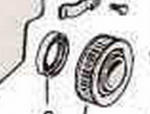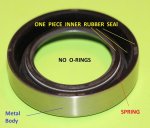pantaloonz
Petty Officer 1st Class
- Joined
- Nov 28, 2014
- Messages
- 237
Hi Skippy
The tool is on the way..
I have seen the 2X4 insertion method..
I'm being a bit of a grump, I really wanted to boat this weekend and not wait another 5 days for yet another darn tool
Bearing: It's very greased up.. the grease I delivered from the actual gimbal nipple is coating that sucker, but I'll look it over and add more if needed
I should be able to reach the area the bearing sits to clean out where it sits
I guess I gotta dry the tears and get past the lost weekend..
I'm surprised that the drive shaft fits THAT snugly on that bearing.. shouldn't SOMETHING be holding that thing in place?
-Pantz
The tool is on the way..
I have seen the 2X4 insertion method..
I'm being a bit of a grump, I really wanted to boat this weekend and not wait another 5 days for yet another darn tool
Bearing: It's very greased up.. the grease I delivered from the actual gimbal nipple is coating that sucker, but I'll look it over and add more if needed
I should be able to reach the area the bearing sits to clean out where it sits
I guess I gotta dry the tears and get past the lost weekend..
I'm surprised that the drive shaft fits THAT snugly on that bearing.. shouldn't SOMETHING be holding that thing in place?
-Pantz























